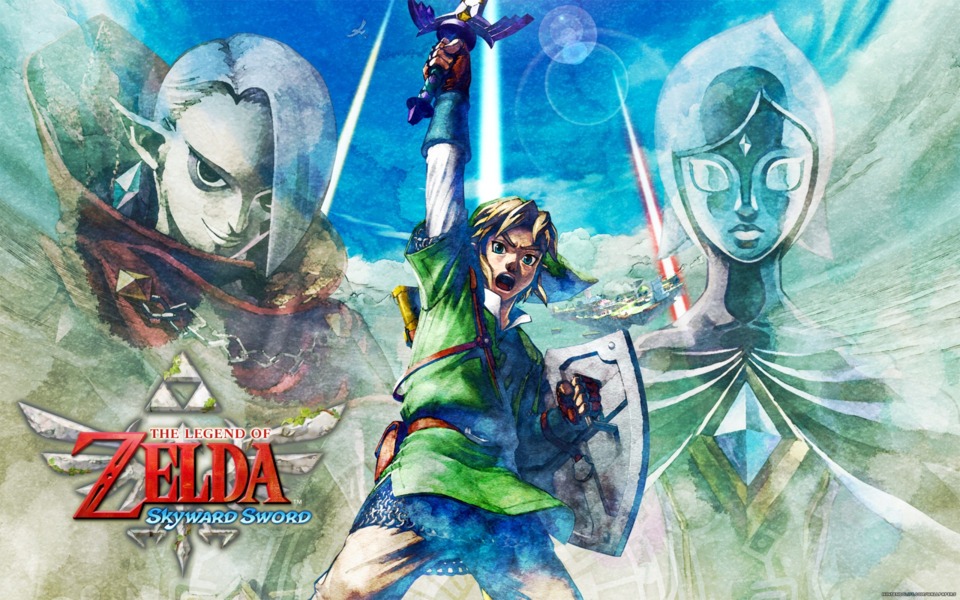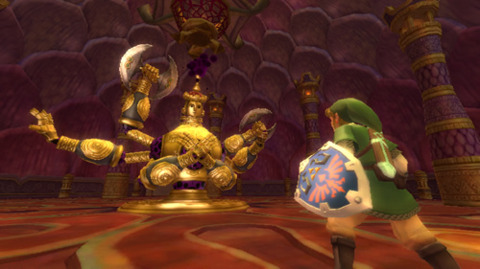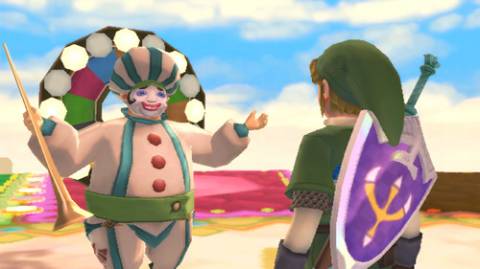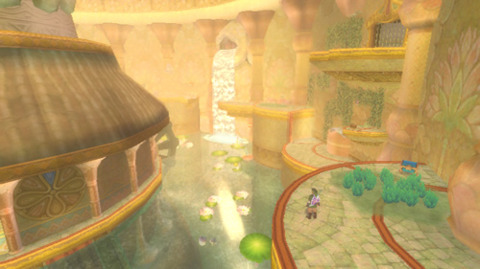The Newest Old Zelda: November’s Backlog Battle
By jeremyf 0 Comments

By 2011, I was done with the Wii. At the time, I was more focused on building my Steam library with games that wouldn’t be played until this very backlog battle. I skipped out on The Legend of Zelda: Skyward Sword despite my fandom for the series. In the following decade, I saw the standard “Zelda Cycle” take place in popular opinion. There was the initial hype, followed by legions of haters, and eventually a reevaluation saying it was good the whole time. All of that commotion is probably what kept me away still until the HD remaster for Switch came out a few years ago. I got it slightly discounted and sent it directly to my shelf.
I wasn’t sure of the right moment to play Skyward Sword until I devoured Tears of the Kingdom six months ago. That game, if you forgot, is one of the most impressive sandboxes ever. It pushes you to go in any direction you choose and rewards you for thinking outside of the usual boundaries. In other words, it’s the polar opposite of Skyward Sword. As someone who does miss some of the traditional elements in newer games, I was curious to see how I would rate the “old Zelda” formula today. I also wanted to evaluate Skyward Sword based on what it is instead of what it isn’t.
The biggest change with the HD release is to the controls. Infamously, the Wii edition used motion control for almost every action. Waving the remote in different directions would theoretically be reflected in Link’s sword swings. On the Switch, they added the option for a regular controller. The sword is now mapped to the right analog stick, and you have to flick it at the proper angle to replicate the function. I wanted to use the Joy-Cons for my playthrough because the game was designed for motion control. Unfortunately, my Joy-Cons drift so badly so as to be unusable. I went for the Switch Pro Controller instead. That probably allowed me to play for longer sessions without getting tired. Flicking the stick worked decently well, but it wasn’t 100% reliable. I can’t say if the other method would be better, but at least I was able to do everything asked of me without too much difficulty.
Skyward Sword has the reputation of being the most linear Zelda game of them all. That is absolutely true. There are scant few moments when you are let off of the leash and allowed to explore. That’s enforced with the level design itself. The world is not seamless - instead, you have the overworld in the clouds with three entrances to the world below. These are the grass, fire, and desert levels, which Link continuously revisits over the course of the game. Once you’re on the surface, you’ll find a lot of moments where you’re funneled down hallways. Sure, there are puzzles to solve, quests to complete, and shortcuts to activate, but you will not have any room to poke around at the edges. And you know what? That’s not necessarily a bad thing. After Skyward Sword came out, “linear” became a dirty word for Zelda. But there’s something to be said for a tightly controlled adventure. At their best, these layouts allow for momentum and escalation of challenge that just isn’t possible in a wide open world. I wouldn’t want every game to be like this, but the mechanics of items and combat are strong enough to support it here.
Unfortunately, I can’t say “tight” is a good descriptor for large portions of the game. Skyward Sword is stuffed with egregiously bad filler. Nothing is ever simple - if the story asks you to open a door, it’s not enough to find the key. You’ll have to find the guy who can make the key, who will ask for a latte, but they’re out of beans, so you need to gather them from far-off corners of the land. It’s that kind of thing. My play time ended up being pretty slight, so I can see Nintendo trying to extend the length of the game. All this backtracking, though, only bogs it down. Traversing the skies is probably the worst part of the experience. Aside from the town of Skyloft and a few scattered minigames, it’s just some floating rocks with chests on them. These chests won’t activate until you find the corresponding cube on the surface, which just feels like an extra step on both ends. The distance between things is vast, and your bird moves quite slowly. Empty overworlds are a regular problem in 3D Zelda games, but this one is surely the most anemic of the bunch.

To flip the script, the open world Zelda games have caught a lot of heat for their dungeons. They got better atmosphere in Tears of the Kingdom, but the nonlinear design can make them feel scattershot. The dungeons in Skyward Sword blow the modern version out of the water. Once the game stops fooling around and finally lets you in a temple, the pacing problems go away. These aren’t sprawling labyrinths. You’re still dealing with a mostly linear set of challenges, but that allows for a natural and rewarding difficulty curve. Skyward Sword contributes ideas like Timeshift Stones, which change an area’s state in real time, and memorable set pieces like a giant statue that alters the dungeon depending on its position. Each level is remarkably solid, and with the best stuff coming later in the game, there’s always something to look forward to. Even the items are smartly implemented - there aren’t too many, and few totally new ones, but the game won’t let you go too long without whipping each one out.

The adventure is important, but the surrounding elements also go a long way to making a memorable Zelda game. I’m mixed on the story and characters in Skyward Sword. To be sure, this incarnation of Link is infinitely more expressive than the emotionless shell we have now. He still travels with a robotic pal, though. Your companion character is Fi, the soul of the Master Sword. It’s not a bad idea to stick the hero with a cold, calculating entity. In most stories with this pairing, though, the detached character slowly becomes more open over time. Not really the case with Fi. A lot of her dialogue from the original release was made optional in the HD version to minimize the interruptions to gameplay. While that kept me from hating Fi, as many did, it’s not like they replaced that with anything to win me over. In the end, I don’t have any sort of opinion on her. A shame, because her design and animation are really solid. Many of the other NPCs are strictly functional, telling Link where to go and what to fetch. The big standout, of course, is Groose. We love a reformed himbo.

Presentationally, the choices in art direction have kept Skyward Sword looking good 13 years later. They sort of mushed the bright colors from Wind Waker onto the geometry from Twilight Princess, and the results are appealing. There are some low-poly objects, though, that don’t look great in this resolution and remind you of the hardware they were working with at the time. Fortunately, the music performed by a live orchestra is totally insulated from aging. There are some great songs and some that aren’t as memorable, but the score always underlines the emotion of the scene. The most thrilling moment of the whole game is the explosion of brass at the start of the credits. It launches into the game’s main leitmotif, then to the most triumphant rendition of the series theme heard yet. It’s undeniably classy, a sensibility that extends to the UI design as well. I really dislike the minimalist interface of the open world games. Skyward Sword goes the other direction with pleasing gold and purple. Even the pink hue of the heart display contributes to the message Nintendo is trying to send: Zelda is prestige.
It’s too bad that the argument was unconvincing for a lot of people who played Skyward Sword. For my part, I found a lot to enjoy in my first playthrough. At the same time, its frequent limitations and sluggish tendencies make me unlikely to return to it before any other Zelda game. Still, I will keep beating the drum that this style of Zelda has a lot left to offer. Nintendo turned towards open design with A Link Between Worlds, and they haven’t looked back since. I still have a tremendous amount of fondness for Tears of the Kingdom and everything it does to flip the series on its head. I just hope we haven’t seen the last of this version of the legend.
